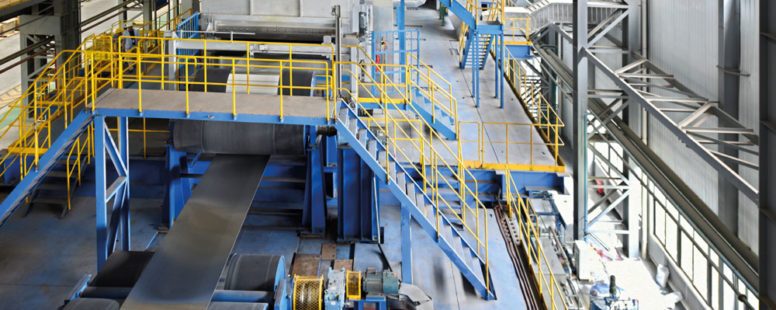Taking temperature measurement to the next level
EBNER.blog | Michael Blaimschein & Michael Klostermann, EBNER
Taking temperature measurement to the next level.
The EBNER R&D Department has developed a groundbreaking temperature measurement system for floater furnace facilities that operates both safely and efficiently, providing periodic verification of the entire heat treatment process.
To supply high-quality aluminum strip to the aerospace industry, certification in accordance with the AMS 2750 standard is required. To fulfill the requirements of this standard, the operator of a heat treatment facility must carry out temperature measurements at periodic intervals under processing conditions.
This form of quality assurance is referred to as the “Temperature Uniformity Survey”, or TUS. A similar standard has also been defined for use during the manufacture and supply of automotive sheet. Fulfillment of the requirements of the AMS 2750 / CQI9 standards is often required by companies located further down the supply chain. Many aluminum producers go even further and also take measurements of the material temperature, which may also be required for quality assurance purposes as agreed upon with their customers.
DEVIATING VALUES: THE GREAT CHALLENGE
The current technological standard for taking measurements at a floater furnace facility calls for fiber optic thermocouples and an external recorder for the measured data, which is installed alongside the facility. Depending on the type of measurement taken, the length of the thermocouple lines may range between 70 and 120 m per measuring point. To verify the uniformity of the temperature, at least three thermocouples must be affixed to the strip. However, due to the length of some of the lines and the variation in temperatures along the length of the wires, deviations may be found in the values recorded for these measurements. Furthermore, to carry out measurements in this way requires a large number of personnel to ensure that the thermocouples are properly guided. This limits reliability, particularly at high strip speeds.
Due to the ever-increasing emphasis on process stability, it is necessary to continuously measure cooling within the water quench. Using conventional methods of measurement, this can only be realized to a limited extent – and that with difficulty. This means that, at this time, a significant portion of the heat treatment process can only be monitored with great effort or using mathematical modeling.
EBNER’S NEW DEVELOPMENT: A SOLUTION
Our new temperature measurement system prevents these problems from arising at all. One of the key points in our approach is a redesign of the temperature sensing equipment, which is now comprised of multiple reusable systems. This significantly reduces the wear on thermocouples. During development, another focus was placed on an alternative method of securing the thermocouples, which are now independent of the carrier strip. This reduces facility downtime, as there is no need to reconfigure to handle new strip dimensions. The clear USP for this system is, however, its ability to record the entire temperature profile of the process – including the water quench.
The new measuring system is comprised of a frame of steel tube, which is secured to a strip. Mounted on the frame are samples with sheathed thermocouples welded or soldered on; these are linked to the data logger, which travels with the frame. The carrier frame can be adapted to fit different widths of strip using telescoping rails. The data logger is mounted in the center of the carrier frame, and is protected from the heat treatment process by a heat-resistant casting. The design ensures that all sensitive electronics can travel safely through the facility, even with low pass heights. The carrier system was optimized using finite element simulations, ensuring that the weight placed on the strip by the measuring electronics was kept as low as possible.
Using the new EBNER measuring system, the temperature profile of a facility can be verified easily, quickly, and safely – and without long downtimes. The water resistance of the data logger was a particular challenge for our developers, but in the end it was overcome through adaptations to the heat-resistant case and the quench deflector. Our in-house development team is now working with our partner and the supplier of the electronic measuring equipment to develop our existing prototype into a product ready for series production. EBNER will soon be able to assist its customers with their certification needs.
Measuring setup on aluminum strip



